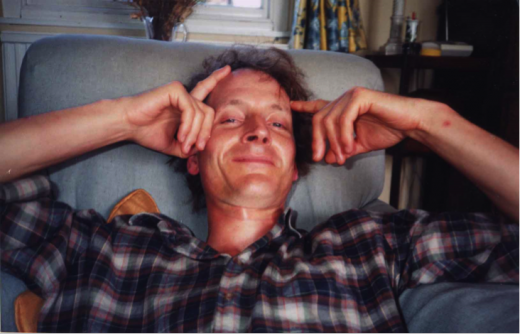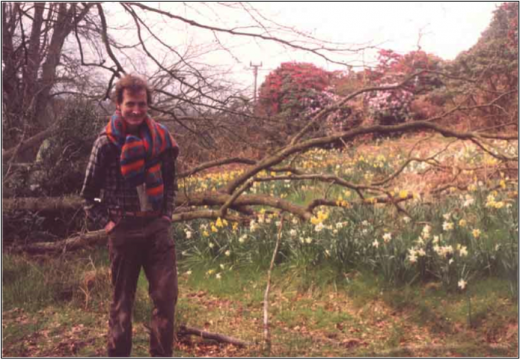This article is about one of the most remarkable and lovely people I have ever met, Nicholas Albery.
Today it is common to talk about social enterprises. But in the 1970s it was not so well-known.
Nicholas inspired many people to take their path in their own way. Here is some background.
Background
Many ideas for doing positive work took root in the 1970s and early 1980s. Whilst the Cold War and Big Business dominated many people’s minds, others were beginning to explore other directions. Despite warnings that the Doomsday Clock was approaching midnight, many people sought ways forward.
Some focused on Positive Psychology, some focused on Strengths. Some began building ethical businesses, some focused on helping others to making a living doing what they loved. Some people led social initiatives that encouraged others to mobilise their talents.
Nicholas Albery was such a person. Born in 1948, he accomplished much in his short life.
He was probably best known for setting up The Institute for Social Inventions. This built a formidable track record of enabling people to imagine and implement their own ideas for tackling challenges. He defined a social invention as:
A new and imaginative way of tackling a social problem or improving the quality of life.
Writing the Foreword to The Book Of Visions: A Catalogue Of Social Inventions, Anita Roddick explained:
That is why I am so fond of the Institute for Social Inventions. We all have visions of a better world. Far too often we treat them as mere dreams, precisely because they are not linked to tasks.
The Institute gives voice to the many incremental but bold tasks people have invented to take us towards our visions – to make hope in this world.
I first met Nicholas in the 1970s. Incredibly generous, he exuded a belief in people. He was brilliant at enabling people to use their imaginations to find solutions to local challenges.
The school children in one district, for example, wanted to develop a play area away from adults. The solution they came up with, facilitated by Nicholas, was to create their own playground. It could only be reached, however, via small holes that only children could crawl through.
Nicholas ran workshops throughout Europe and similar centres were set-up in Sweden, Russia and Germany. The UK Institute went on to run competitions to publicise social inventions, with cash prizes for the winners. Here are three ideas that emerged.
The Catalogue Of Hope.
Robert Jungk founded The International Futures Library in Salzburg. This collected over 600 social inventions from around the world.
Many of these were described in The Catalogue of Hope. The know-how was also preserved in a Data Bank of Hope. People could tap into the bank to get information about social inventions for building a better world.
Wildlife Areas Around Hospitals
Pat Hartridge said her idea came when she spent two grey weeks in the isolation unit of Churchill Hospital Oxford, awaiting diagnosis of Legionnaires’ Disease. Her hospital stay was enlivened by a robin that perched on a wall outside her window.
A string of nuts would produce a blue tit or two, she thought, and a bird table would be better than TV. Wildlife areas could spring-up around hospitals. Birds, bees and butterflies would be attracted closer to the wards and seen by the patients.
Pat described her ideas to local nurses and suggested ways to create the Wildlife Areas. The aims would be:
To bring life, joy and colour closer to the ward.
To create an interest outside the daily routine of the ward and to encourage visitors to bring gifts of birdseed rather than flowers.
To encourage patients who are keen to record sightings of various species to add this information to the local nature conservancy records.
To invite visiting speakers to talk about wildlife topics. They would increase knowledge and add enjoyment to the observation.
To enlist the help of volunteers from nearby schools to care for the maintenance of the sites once they were established.
The Churchill Hospital was particularly enthusiastic and, with active help from the Assistant Nursing Officer, Mrs Patterson, planned for the areas to be planted. Pat continues:
My original idea – for two or three gardens to be planted and maintained by volunteers from the hospital and local schools–was defeated by its own success.
The site proved so rich in likely sites that a more organised workforce was obviously required and I got the Berks, Buck and Oxon Naturalists’ Trust to act as agents for me through their MSC Community Programme.
The Royal Society for Nature Conservation have since put together a research report and project pack on how to get such hospital wildlife gardens off the ground … There are now a large number of Hospital Wildlife Gardens in progress or under consideration in the UK.
Adopt-A-Planet
The Adopt-A-Planet Competition was sponsored by the Gulbenkian Foundation. Any school class or youth club could enter the competition, which focused on anti-vandalism and anti-graffiti projects.
They adopted a local vandalised area and improve this part of the neighbourhood. Young people submit before and after photos to the Foundation, which gave the overall winner a substantial cash prize.
George Farmer School in Holbeach, Lincolnshire, won the top prize in 1991. One class adopted a disused pond in Holbeach, which they felt had become: “an eyesore, a dumping site and a general embarrassment.”
Pupils persuaded a local contractor to excavate the pond. They then cleared the area and planted shrubs, trees and wild flower seeds. Police and local farmers kept watch over the area to prevent future dumping.
Pupils spent the prize money on a bird table, nesting boxes, benches and another small pond. Adopt-A-Planet encouraged young people to act local and think global.
————–
Nicholas’ legacy lives on in ventures such as The Global Ideas Bank and The Natural Death Centre. The latter idea was typical of his work. Based on ancient traditions, it showed how modern societies could have ‘midwives’ for the dying and simple funerals in harmony with the Earth.
His own death was untimely. He was killed in a car crash in 2001 and buried in accordance with his wishes. Nicholas had written:
When I die, I want to be buried under an apple tree. I think of death as like a leaf falling off a tree. Here are some extracts from his Obituary in The Guardian, written by Walter Schwarz.
Albery was funny, exuberant and much loved. His self-deprecating manner gave him a peculiarly English charm, which concealed the originality of his mind; most of his friends considered him a genius.
Uninterested in fame for himself, his passion was to open up the search for innovation to all.
Born at St Albans, Albery was the son of Sir Donald Albery, the impresario and theatre owner, and his wife Heather, and went to Stowe school.
While a student at St John’s College, Oxford, he became involved with psychedelic and spiritual movements in San Francisco, dropped out of college and joined the anti-university in London.
In this period, his friendship began with Nicholas Saunders, whom he helped in setting up the popular Neal’s Yard wholefood complex of alternative enterprises in Covent Garden, London. Saunders died, also in a car crash, three years ago.
Albery’s life was full of irreverent gestures with a constructive purpose.
In the late 1970s, he was a minister in the Frestonia Republic he helped to found, after the residents of Freston Road, in northwest London, threatened with eviction to make way for a factory, voted in favour of independence from Britain.
http://www.guardian.co.uk/news/2001/jun/08/guardianobituaries.books
Nicholas was once asked: “What does a person need to be a social inventor?” His reply was:
To have had a mentor who believes in you; to have run an enterprise when quite young; to be an artist with a creative mind.
He embodied all these qualities. As his Obituary in the Independent said:
To his friends he was supportive and showed great generosity and loving-kindness.
For friends and strangers alike, he brought a sense of excitement to every occasion, challenging, always asking questions that got to the heart of the situation, and spilling over with ideas.
http://hqinfo.blogspot.com/2006/08/alternative-society-1970s-nicholas_31.html
Nicholas used his talents to help other people to succeed. Many people who met him believed he was a beautiful soul. He was buried on the family’s private land he loved, not far from his friend Nicholas Saunders.
His funeral was entirely family organised and followed the principles of the Natural Death Centre. Nicholas was survived by his wife Josefine Speyer and their son Merlyn.








Nicholas was my cousin
I was one of the people who Nicholas inspired and my idea was amazingly the alternative energy social invention of the year – I believe 1991 or so. I felt valued and honored. Still do.
I’m sure that his generous spirit still yields fine crops of unusually delicious apples from his tree – I’ll bet they would also make a fine hard cider.
My latest social invention is a small book entitled Smoke No Evil. I love imagining that Nicholas would approve.
It was a delight to read the positive article about Nicholas Albery.
I edited Communes Magazine in the early 70’s whilst living with my wife,Cathy Davies, in the Trokes Family commune in West Wales. We both met Nicholas and his rather formidable partner Josephine Speyer, whilst they were touring Wales in a horse-drawn caravan, and though it was only a short encounter, Nicholas was a person who made a lasting impression. He was very instrumental in forging the existence of what became known as the alternative society and those times were exciting and full of a promise that was never truly realised.
Dave Puddy